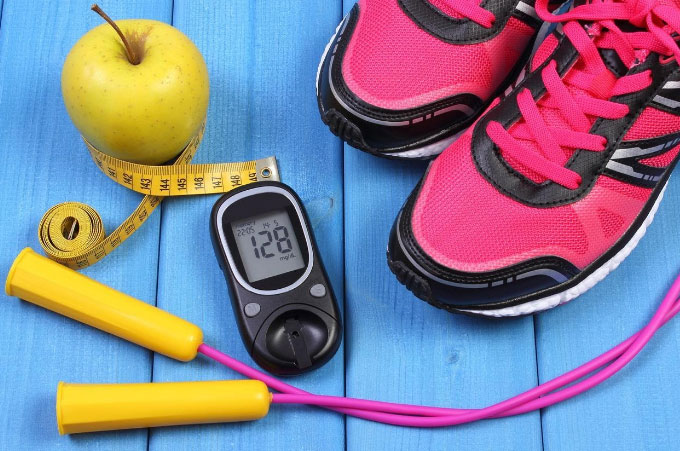Exercising with Diabetes
Dealing with diabetes means constantly grappling with your blood sugar levels. It’s important to maintain control of your blood sugar and your body’s ability to process insulin. Exercise can help to lower your blood sugar, making it easier for your cells to take in that necessary insulin. But exercising with diabetes isn’t as straightforward as you might think.
Did you know that your body can use glucose for energy, whether or not you have insulin? This is a great way for people with diabetes to stay healthy and on top of their blood sugar levels. Our internist Beverly Hills doctor, Dr. Gura, focuses especially on helping diabetic patients find balance through healthy lifestyle choices.
Exercise is a great way to reduce blood sugar, but you don’t want to overdo it. Here’s how you can get a healthy dose of cardio while staying on top of your sugar and glucose levels.
How Exercise Affects Blood Sugar
Staying active is important for everyone’s everyday health. But as someone with diabetes, you need to make sure you take it easy – at least when starting out. But there are some things to know about exercising with diabetes.
How exactly can exercise help your blood sugar levels?
Not to mention, during exercise, the body also uses glucose as energy with or without the need for nsulin. This can make it easier for your body to maintain normal levels on its own.
But keep in mind that bodies, especially diabetic bodies, are very sensitive to exercise. Working out may raise or lower your blood sugar at different times. It is very important to keep an eye on how your body is responding to exercise. Start small and monitor your progress as you go.
Go Slowly and Remember 15-15!
You can always follow the 15-15 rule when exercising. This is a simple exercise that can help you stay on top of your blood sugar levels while you work out, giving you a break every 15 minutes. It is also a great way to check whether your blood sugar is too low so you can deal with it fast. .
Here’s how to follow this rule:
- Check your levels of blood sugar.
- Eat 15 grams of carbs if your blood sugar reads lower than 100 mg/dL.
- Wait 15 minutes and check your blood sugar again.
- If it still measures below 100 mg/dL, repeat these steps.
- Repeat the process until your blood sugar levels are over 100 mg/dL.
Do not exercise if your blood sugar levels are below 100 mg/dL! You will put yourself at risk for a low blood sugar episode, which could cause your levels to be dangerously low. Instead, monitor your levels frequently and give yourself a break if you need to.
Avoiding Hypoglycemia While Working Out
It’s a good idea to take it slowly and monitor your activity every 15 minutes. But you should know that you can still get low blood sugar well after your workout. Even if you finished your physical activity, you still run the risk of hypoglycemia if you exercised too much or too strenuously.
Make sure that you also do not avoid meals after your workout, as this can contribute to dangerously low levels of blood sugar. Check with your doctor if you are not feeling well or if you can’t seem to regulate your blood sugar levels when you exercise.
Stay in Touch with Your Diabetes Specialist!
If you want to establish a workout routine while managing your diabetes, you might want to establish a plan of care with your diabetes specialist Los Angeles before moving forward. Exercising with diabetes can increase your body’s sensitivity to insulin, making it easier for your blood sugar levels. But it’s important to avoid the risk of taking it too far, which could result in drastic symptoms immediately or later in the day.
Stay in touch with your diabetes doctor and listen to your body’s needs. Only work out when it makes you feel better. Don’t forget to keep an eye on your blood sugar!

